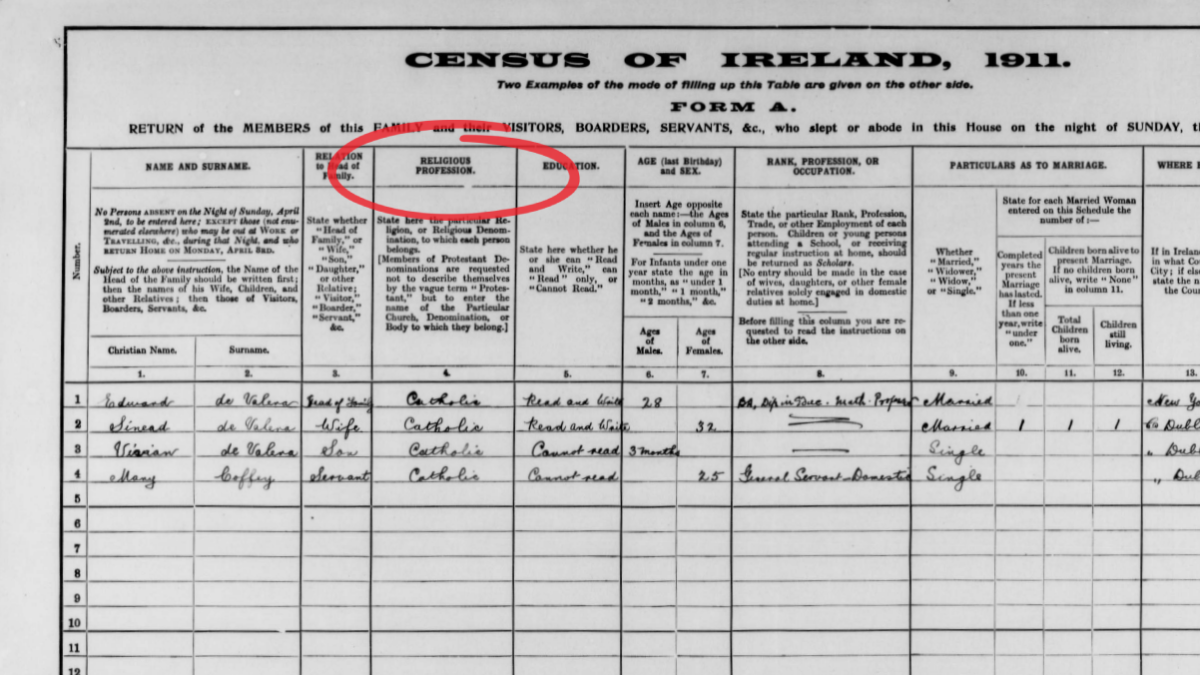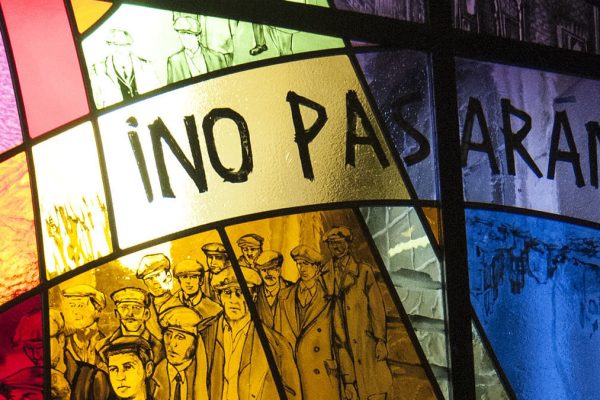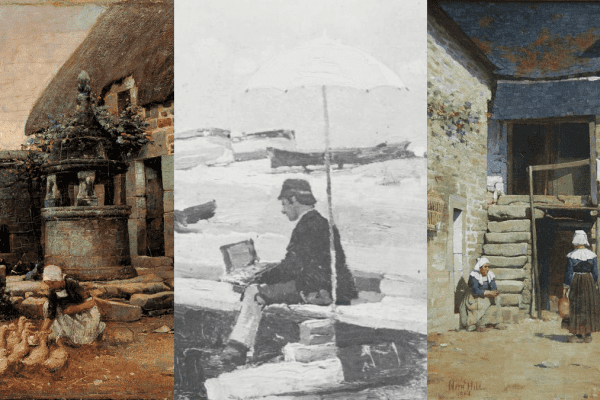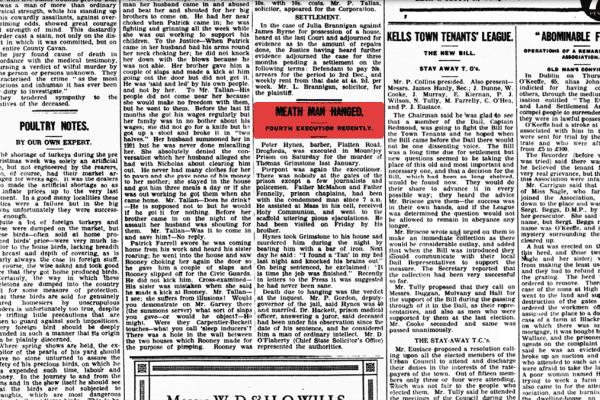The 1911 census of Ireland recorded over 4.3 million people residing in the country, documenting demographic data such as age, education and religion. This data provides a glimpse into the religious landscape of Drogheda during this period.
Defining the historical boundaries of Drogheda can be challenging, as the town lines have evolved and also straddle two counties. For this analysis, the Drogheda district electoral divisions (DEDs) for Louth were used. When overlaid with a modern map of the town, they appear as:
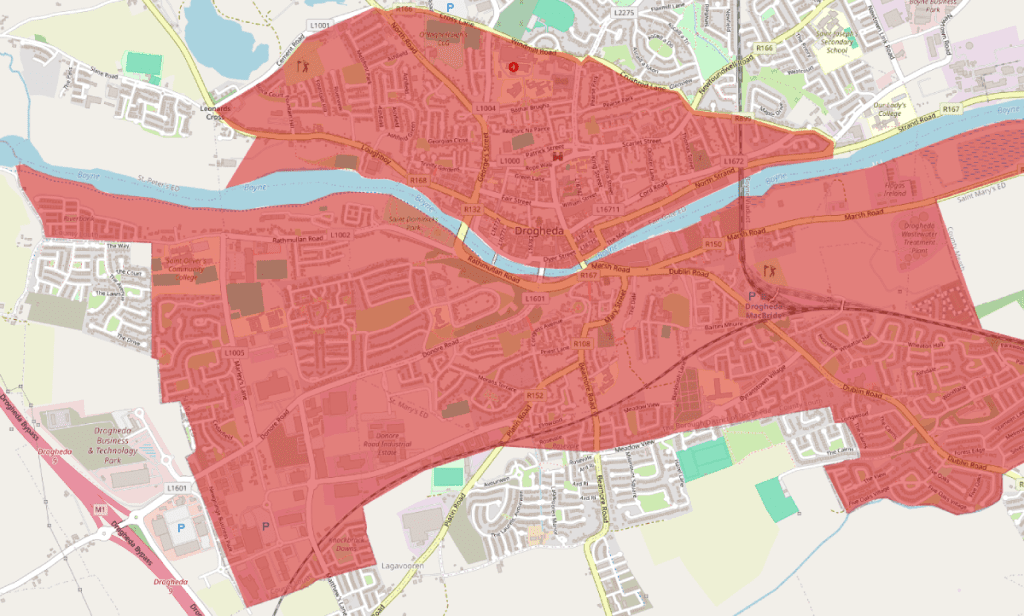
From this catchment area, 12,551 individuals and their religions are recorded, with the area being chiefly urban.
Overview of Religions in Drogheda
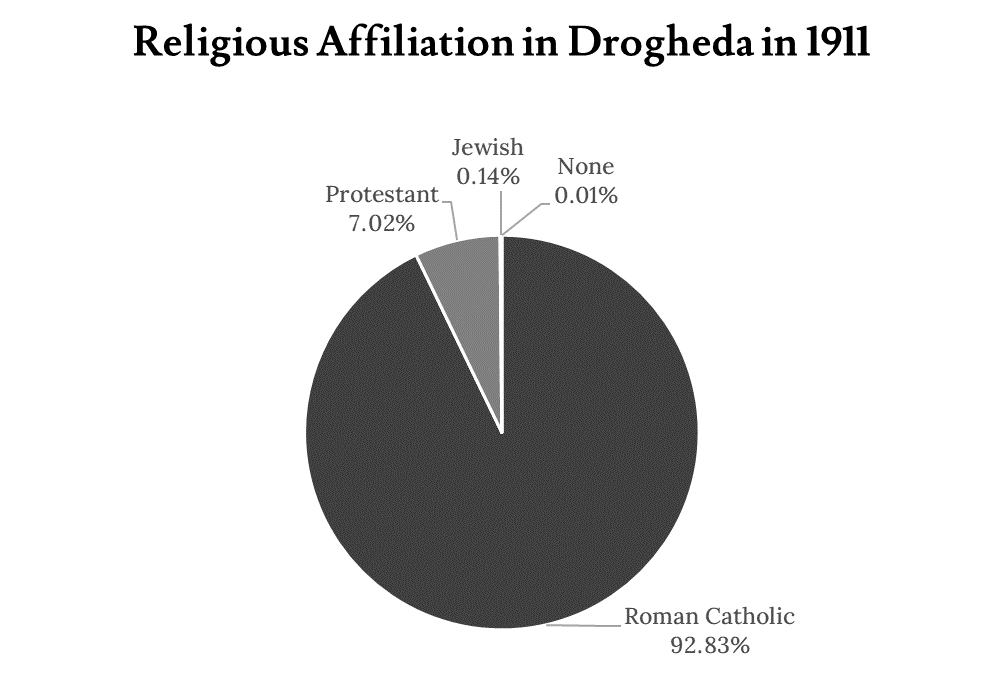
Roman Catholicism
Unsurprisingly, Roman Catholicism was the dominant faith, accounting for just under 93% of the population. Nationally, the percentage of Roman Catholics was 73.8%, making Drogheda a stronghold of this faith. Catholic churches were located across the town, with six in use at the time of the census.
Protestantism
Protestants comprised a smaller yet significant portion of Drogheda’s religious landscape in 1911.
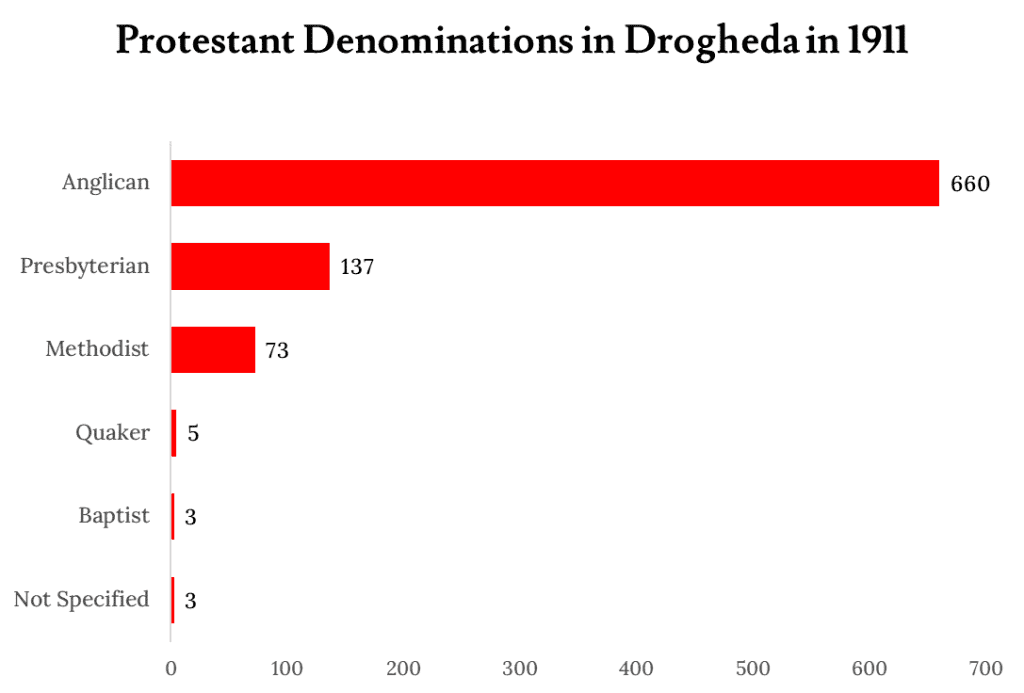
By far, Anglicans were the predominant denomination of Protestants in Drogheda. 93% of Anglicans adhered to the Church of Ireland, with the remainder being mainly Church of England. One family identified as Church of Scotland. There were two Church of Ireland places of worship at the time: one on Mary Street and the second at the top of Peter Street.
Presbyterians were the second-largest Protestant group. Presbyterianism was reportedly established in Drogheda following Cromwell’s siege,[1] and their place of worship at the time of the census was on Palace Street.
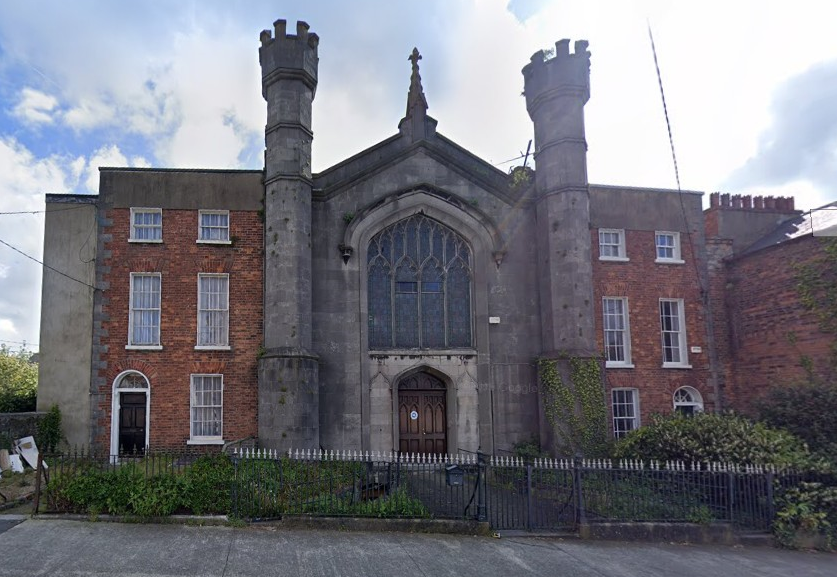
There was a sizable proportion of Methodists in Drogheda at the time. Their church, on Laurence Street, was built 100 years before the census took place, and in that year it saw refurbishment works being undertaken.[2]

Both Baptists and Quakers were represented by a single family each. The Harbron family, originally from Dublin, were Baptists and had moved to Drogheda, where William Harbron worked as a foreman at the Drogheda train station. The Quaker Bass family, residing on William Street, had moved from England, with Isaac Bass marrying in Omagh before settling in Drogheda.
Judaism
The Jewish community in Drogheda, like many other parts of Ireland, was part of a broader pattern of migration driven by persecution in Eastern Europe.[3] These families often established small businesses and became integral parts of the local economy. Jews constituted 0.14% of Drogheda’s population, slightly higher than the national percentage of 0.11%.
Among the 17 Jews in Drogheda, 5 were born in Russia, 4 in Israel, 3 in Louth and the remainder in Romania, Dublin, Liverpool, and Scotland. They established shops in the town, such as drapers and general goods stores. Notably, John Horrowitz from Romania, known locally as “Jack the Jew,” owned a shop on Dyer Street.
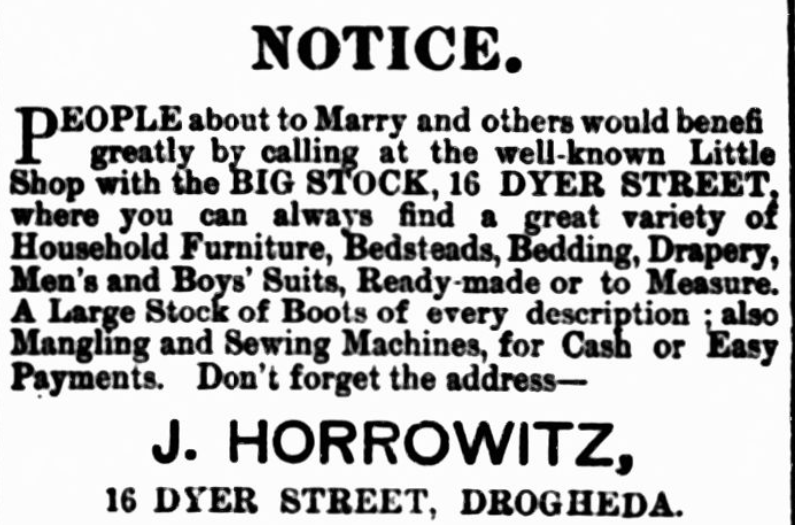
January 13, 1906, p.2
The Non-Religious
In 1911, only one person in Drogheda identified as non-religious. Joseph M. Reilly, a lodger at Albany Terrace on William Street with the Methodist Kirkpatrick family, declared “no particular religion.” The enumerator, Constable John Lynch, noted that “giving further information was declined.” Reilly was a solicitor with a practice at 43 Laurence Street.

Being non-religious in early 20th-century Ireland was unusual and could certainly carry a social stigma. Reilly’s declaration of no particular religion was likely a significant personal stance in a predominantly religious society.
Comparing these figures to the 2022 census, the religious landscape of Drogheda has shifted significantly. Attendance and adherence to the aforementioned religions have declined, with some, like Judaism, virtually disappearing from the town, with most families moving on to other locations. The previously mentioned Methodist church held its final service in 1963 due to low attendance.[4] Conversely, the lone stance of Joseph Reilly has seen an increasing upturn in the many decades since the census was conducted.
References
- Foley, Dermot. “Presbyterianism in Drogheda, 1652-1827.” Journal of the County Louth Archaeological and Historical Society 25, no. 2 (2002): 179-188. doi:10.2307/27729906.
- Former Wesleyan Methodist Church, Drogheda, Co. Louth,” Archiseek, June 13, 2024, https://www.archiseek.com/2010/1811-former-wesleyan-methodist-church-drogheda-co-louth/.
- Rivlin, Ray. Jewish Ireland: A Social History. Dublin: The History Press, 2014.
- Collins, Sean, “Architectural Gem in Laurence Street Lies Vacant but Was Once a Busy Church,” Drogheda Life, January 18, 2024, https://droghedalife.com/news/architectural-gem-in-laurence-street-lies-vacant-but-was-once-a-busy-church.
